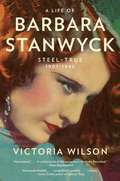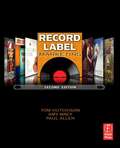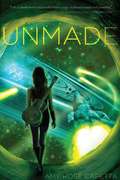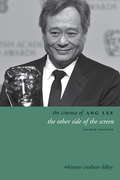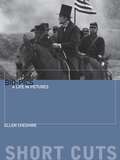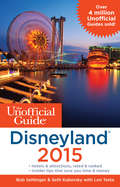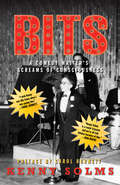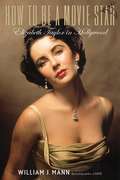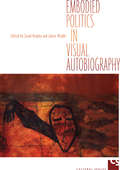- Table View
- List View
Inspiring Fellini
by Federico PacchioniFederico Fellini is considered one of the greatest cinematic geniuses of our time, but his films were not produced in isolation. Instead, they are the results of collaborations with some of the greatest scriptwriters of twentieth-century Italy. Inspiring Fellini re-examines the filmmaker's oeuvre, taking into consideration the considerable influence of his collaborations with writers and intellectuals including Pier Paolo Pasolini, Ennio Flaiano, Tullio Pinelli, and Andrea Zanzotto. Author Federico Pacchioni provides a portrait of Fellini that is more complex than one of the stereotypical solitary genius, as he has been portrayed by Fellini criticism in the past. Pacchioni explores the dynamics of Fellini's cinematic collaborations through analyses of the writers' independently produced works, their contributions to the conceptualization of the films, and their conversations with Fellini himself, found in public and private archival sources. This book is an invaluable resource in the effort to understand the genesis of Fellini's artistic development.
A Fiddle For Angus
by Budge WilsonAngus' family is musical. Everyone has their own instrument and everyone knows how to make music. But Angus can only hum along to his family's playing, and humming isn't good enough. Angus wants to join his family's orchestra. When Angus' father tells him the family will give him an instrument, he can't choose until he hears the fiddle at a ceilidh. But fiddling is hard; he can't make the music he wants. With patience, practice, and lots of lessons, Angus' fingers learn how to play, and the music inside him finds a way out. Budge Wilson's story will ring true for every young musician and is a fitting tribute to the music makers of Cape Breton.
A Life of Barbara Stanwyck
by Victoria WilsonFrank Capra called her "The greatest emotional actress the screen has yet known." She was one of its most natural, timeless, and underrated stars. Now, Victoria Wilson gives us the first full-scale life of Barbara Stanwyck, whose astonishing career in movies (eighty-eight in all) spanned four decades beginning with the coming of sound, and lasted in television from its infancy in the 1950s through the 1980s--a book that delves deeply into her rich, complex life and explores her extraordinary range of motion pictures, many of them iconic. Here is her work, her world, her Hollywood. We see the quintessential Brooklyn girl whose family was in fact of old New England stock . . . her years in New York as a dancer and Broadway star . . . her fraught marriage to Frank Fay, Broadway genius, who influenced a generation of actors and comedians (among them, Jack Benny and Stanwyck herself ) . . . the adoption of a son, embattled from the outset; her partnership with the "unfunny" Marx brother, Zeppo, crucial in shaping the direction of her work, and who, together with his wife, formed a trio that created one of the finest horse-breeding farms in the west; her fairy-tale romance and marriage to the younger Robert Taylor, America's most sought-after-- and beautiful--male star. Here is the shaping of her career with many of Hollywood's most important directors: among them, Frank Capra, "Wild Bill" William Wellman ("When you get beauty and brains together," he said, "there's no stopping the lucky girl who possesses them. The best example I can think of is Barbara"), King Vidor, Cecil B. De Mille, and Preston Sturges, all set against the times--the Depression, the New Deal, the rise of the unions, the advent of World War II--and a fast-changing, coming-of-age motion picture industry. And here is Stanwyck's evolution as an actress in the pictures she made from 1929 through the summer of 1940, where Volume One ends--from her first starring movie, The Locked Door ("An all-time low," she said. "By then I was certain that Hollywood and I had nothing in common"); and Ladies of Leisure, the first of her six-picture collaboration with Frank Capra ("He sensed things that you were trying to keep hidden from people. He knew. He just knew"), to the scorching Baby Face, and the height of her screen perfection, beginning with Stella Dallas ("I was scared to death all the time we were making the picture"), from Clifford Odets's Golden Boy and the epic Union Pacific to the first of her collaborations with Preston Sturges, who wrote Remember the Night, in which she starred. And at the heart of the book, Stanwyck herself--her strengths, her fears, her frailties, her losses and desires; how she made use of the darkness in her soul in her work and kept it at bay in her private life, and finally, her transformation from shunned outsider to one of Hollywood's--and America's--most revered screen actresses. Writing with the full cooperation of Stanwyck's family and friends, and drawing on more than two hundred interviews with actors, directors, cameramen, screenwriters, costume designers, et al., as well as making use of letters, journals, and private papers, Victoria Wilson has brought this complex artist brilliantly alive. Her book is a revelation of the actor's life and work.
Why Theatre Matters
by Kathleen GallagherWhat makes young people care about themselves, others, their communities, and their futures? In Why Theatre Matters, Kathleen Gallagher uses the drama classroom as a window into the daily challenges of marginalized youth in Toronto, Boston, Taipei, and Lucknow. An ethnographic study which mixes quantitative and qualitative methodology in an international multi-site project, Why Theatre Matters ties together the issues of urban and arts education through the lens of student engagement. Gallagher's research presents a framework for understanding student involvement at school in the context of students' families and communities, as well as changing social, political, and economic realities around the world.Taking the reader into the classroom through the voices of the students themselves, Gallagher illustrates how creative expression through theatre can act as a rehearsal space for real, material struggles and for democratic participation. Why Theatre Matters is an invigorating challenge to the myths that surround urban youth and an impressive study of theatre's transformative potential.
Record Label Marketing, 2nd ed.
by Tom Hutchison Paul Allen Amy MacyRecord Label Marketing offers a comprehensive look at the inner workings of record labels, showing how the record labels connect commercial music with consumers. In the current climate of selling music through both traditional channels and new media, authors Tom Hutchison, Paul Allen and Amy Macy carefully explain the components of the contemporary record label's marketing plan and how it is executed. This new edition is clearly illustrated throughout with figures, tables, graphs, and glossaries, and includes a valuable overview of the music industry.<P> Record Label Marketing has become essential reading for current and aspiring professionals, and for music business students everywhere. <P> Record Label Marketing.<P> * Gives you an exclusive and complete look at SoundScan and how it is used as a marketing tool<P> * Presents essential information on uses of new media, label publicity, advertising, retail distribution, and marketing research by record labels<P> * Offers insight into how successful labels use videos, promotional touring, and special products to build revenue<P> * Includes important specialized marketing strategies using the tools of grassroots promotion and international opportunities<P> * Reveals how labels are managing within their transitional digital industry<P> * Looks to the future of the music business - how online developments, technological diffusion, and convergence and new markets continue to reshape the industry
Unmade
by Amy Rose CapettaCadence is in a race against time and space to save her family and friends from the Unmakers, who are tracking the last vestiges of humanity across the cosmos. As the epic battle begins, Cade learns that letting people in also means letting them go. The universe spins out of control and Cade alone must face the music in the page-turning conclusion to Entangled.
The Cinema of Ang Lee: The Other Side of the Screen, second edition
by Dilley Whitney CrothersSuggestive readings of gender and identity explore the international appeal of Ang Lee
Bio-pics
by Ellen CheshireThrough a carefully selected range of thematically linked bio-pics, explores key issues surrounding their resurgence, structure, production, subject representation or misrepresentation, and critical response
Bruce McDonald's 'Hard Core Logo'
by Paul McewanConsistently ranked as one of the best Canadian movies of all time, punk-rock mockumentary Hard Core Logo (1996) documents the last-ditch reunion tour of an aging rock band led by vocalist Joe Dick (Hugh Dillon). Well received by critics at the time of its release, the film continues to enjoy a devoted international cult following.This entertaining analysis of Hard Core Logo explores many of the film's key themes, including the responsibility of documentary filmmakers to their subjects, the development of close male relationships, and the relationship between art and commerce in Canada, especially for touring musicians. Paul McEwan examines Hard Core Logo in the context of other adaptations of Michael Turner's 1993 novel of the same name, as well as against other films from McDonald's celebrated career. Featuring interviews with McDonald himself and others involved in the film, Bruce McDonald's 'Hard Core Logo' provides an engaging look at one of Canada's most mythologized movies.
The Unofficial Guide to Disneyland 2015
by Bob Sehlinger Len Testa Seth KuberskyThe Unofficial Guide to Disneyland by Bob Sehlinger & Seth Kubersky makes Disneyland one of the most accessible theme parks in the world. With advice that is direct, prescriptive, and detailed, it takes the guesswork out of the reader's vacation. Whether they are at Disneyland for a day or a week, there is a plan for any group or family. They can enjoy the entertainment instead of spending their time in lines.Comprehensive information is presented in a way that permits easy comparisons and facilitates decision-making. Detailed plans and profiles of hotels, restaurants, and attractions are presented in "at-a-glance" formats, providing for effortless communication of the most salient information. Profiles are supplemented by indexes. In short, we've got a plan for every reader.The Unofficial Guide to Disneyland's research team is a multi-disciplinary group consisting, among others, of data collectors, computer scientists, statisticians, and psychologists. Their singular goal is to provide a guide that lets you get it right the first time, and every time. With their help, advice, and touring plans, readers have a one-up on anyone else not using The Unofficial Guide to Disneyland. The book is the key to planning a perfect vacation in a great destination location.
Bits: A Comedy Writer's Screams of Consciousness
by Kenny SolmsAnne Frank wrote her diary. A yawn. Alex Haley wrote about his roots. A snooze. The Bible. What a bore! But what do all these have in common? That's obvious. They're not funny and the people they wrote about aren't current. Where's Bieber? Jolie? Beyonce? That's who people want to read about and laugh about. Celebrities! And not written by the celebrities themselves. What do they know? If they were smart, they wouldn't have become celebrities in the first place. Who really knows their stories?It's the writer! The guy who was there in the trenches, the guy who made them famous in the first place. Actors and actresses didn't write their lines. It was the writer!Who knew these stars before they became egomaniacs? Before they even knew the difference between Calistoga or Evian? The difference between dark chocolate or milk? Who told them what to say and how to say it? Writers, writers, writers!Kenny Solms has seen them all. He wrote and schmoozed with the best of them. Co-creating the Carol Burnett show in the late 60s, he's written for practically all of them. (However, he has yet to meet Leonardo DeCaprio). Solms wrote their movies, their TV shows. . . . even their "spontaneous" quotes. From the greats like Jack Benny and George Burns to Willard Scott and downwards. But then back up again. And that's quite a leap. He's the one whose bits Lucille Ball uttered. He got Bill Cosby his laughs. Sure, he made millions doing it and garnered a few Emmys as well, but is he cocky? Not remotely. In this Hollywood "tell-all" book, he documents his rise from the Emmy award-winning "Carol Burnett Show" to his doldrums writing for Hugh Hefner's "Roller Disco-Rama Plus a Preview of the Playmate of the 80s. " From the booms to the boobs. From the genius of Michael Jackson tothe hilarity of Joan Rivers, Solms seems to know everybody. Streisand, Sammy Davis Jr. , Neil Diamond. He's written for them all. Even the Muppet, Miss Piggy, who he claims was a bitch. But this book isn't namedropping. Jack Nicholson is one of his best friends. Or malicious gossip. Placido Domingo hitting on Carol Burnett. It's not even a vicious tell-all but tell all, he does. A funny romp that takes you from Philadelphia to Hollywood. A cruise behind the Hollywood scenes, down the freeways, up the canyons and then some. From variety shows to sitcoms, from big star specials to Broadway, he shares his roller coaster ride from writing tacky one-liners to creating TV classics. And what a ride! Jump in the passenger seat and share it with him.
Now Showing in Your Living Room
by Lisa CoccaDiscusses the invention of the television and how it has evolved over the years
Mafia Movies
by Dana RengaRico 'Little Caesar' Bandello, Michael Corleone, and Tony Soprano are just some of the onscreen mafia figures that have fascinated audiences since cinema's inception. Portrayals of the Italian and Italian-American mafia, though, have differed markedly over time and across multiple cultures--from the Godfather trilogy to contemporary Italian films, and in works both by established producers like Martin Scorsese and emerging directors like Matteo Garrone.Mafia Movies encourages mafia aficionados to explore the rich variety of classics and rarities within the genre with provocative analyses of over forty films. The essays in this volume provide a comprehensive exploration of the myth of the mafia onscreen, identifying key features and connections to styles such as film noir, thrillers, and even westerns. Mafia Movies also questions whether there are uniquely American or Italian ways of depicting the mafia, exploring how filmmakers from both countries have approached the subject in divergent ways.
Race under Reconstruction in German Cinema
by Angelica FennerRace Under Reconstruction in German Cinema investigates postwar racial formations via a pivotal West German film by one of the most popular and prolific directors of the era. The release of Robert Stemmle's Toxi (1952) coincided with the enrolment in West German schools of the first five hundred Afro-German children fathered by African-American occupation soldiers. The didactic plot traces the ideological conflicts that arise among members of a patrician family when they encounter an Afro-German child seeking adoption, herein broaching issues of integration at a time when the American civil rights movement was gaining momentum and encountering violent resistance.Perceptions of 'Blackness' in Toxi demonstrate continuities with those prevailing in Wilhelmine Germany, but also signal the influence of American social science discourse and tropes originating in icons of American popular culture, such as Uncle Tom's Cabin, Birth of a Nation, and several Shirley Temple films. By applying a Cultural Studies approach to individual film sequences, publicity photos, and press reviews, Angelica Fenner relates West German discourses around race and integration to emerging economic and political anxieties, class antagonism, and the reinstatement of conventional gender roles.The film Toxi is now available on DVD from the DEFA Film Library.
The Silvering Screen
by Sally ChiversPopular films have always included elderly characters, but until recently, old age only played a supporting role onscreen. Now, as the Baby Boomer population hits retirement, there has been an explosion of films, including Away From Her, The Straight Story, The Barbarian Invasions, and About Schmidt, where aging is a central theme.The first-ever sustained discussion of old age in cinema, The Silvering Screen brings together theories from disability studies, critical gerontology, and cultural studies, to examine how the film industry has linked old age with physical and mental disability. Sally Chivers further examines Hollywood's mixed messages - the applauding of actors who portray the debilitating side of aging, while promoting a culture of youth - as well as the gendering of old age on film. The Silvering Screen makes a timely attempt to counter the fear of aging implicit in these readings by proposing alternate ways to value getting older.
How to Be a Movie Star
by William J. MannElizabeth Taylor has never been short on star power, but in this unprecedented biography, the spotlight is entirely on her--a spirited beauty full of magic, professional daring, and wit. Acclaimed biographer William Mann follows Elizabeth Taylor publicly as she makes her ascent at MGM, falls into (and out of) marriages, wins Oscars, fights studio feuds, and combats America's conservative values with her decidedly modern love affairs. But he also shines a light on Elizabeth's rich private life, revealing a love for her craft and a loyalty to the underdog that fueled her lifelong battle against the studio system. Swathed in mink, disposing of husbands but keeping the diamonds--this is Elizabeth Taylor as she lived and loved, breaking and making the rules in the game of supreme celebrity.
Donald Shebib's 'Goin' Down the Road'
by Geoff PevereSince its release in July 1970, Donald Shebib's low-budget road movie about displaced Maritimers in Toronto has become one of the most celebrated Canadian movies ever made. In this study of Goin' Down the Road, renowned film critic Geoff Pevere provides an engaging account of how a film produced under largely improvised circumstances became the most influential Canadian movie of its day as well as an enduring cultural touchstone.Featuring extensive interviews with the film's key participants, Pevere provides behind-the-scenes history and explores how the movie's meaning and interpretation have changed over time. He gives special attention to the question of why the film's creative mix of documentary techniques, road movie tropes, and social commentary have proven so popular and influential in Canadian filmmaking for decades.
John Walker's Passage
by Darrell VargaJohn Walker is one of Canada's most prolific and important documentary filmmakers and is known for his many thoughtful, personally inflected films. His masterwork, Passage, centres on Sir John Franklin's failed expedition to find the final link of the Northwest Passage connecting the Atlantic and Pacific oceans through the Canadian Arctic. It also gives us the story of John Rae, the Scottish explorer who discovered the fate of Franklin and the final link in the passage, but was left to the margins of history. Walker's film brings to this story a layering of dramatic action and behind-the-scenes documentary footage that build tension between the story of the past and interpretations of the present.Darrell Varga provides a close analysis of Passage, situating it within Walker's rich body of work and the Canadian documentary tradition. Varga illuminates how the film can be viewed through the lens of Harold Innis's theories of communication and culture, opening up the work of this great Canadian political economist to film studies.
Unruly Women
by Margaret BoyleIn the first in-depth study of the interconnected relationships among public theatre, custodial institutions, and women in early modern Spain, Margaret E. Boyle explores the contradictory practices of rehabilitation enacted by women both on and off stage. Pairing historical narratives and archival records with canonical and non-canonical theatrical representations of women's deviance and rehabilitation, Unruly Women argues that women's performances of penitence and punishment should be considered a significant factor in early modern Spanish life.Boyle considers both real-life sites of rehabilitation for women in seventeenth-century Madrid, including a jail and a magdalen house, and women onstage, where she identifies three distinct representations of female deviance: the widow, the vixen, and the murderess. Unruly Women explores these archetypal figures in order to demonstrate the ways a variety of playwrights comment on women's non-normative relationships to the topics of marriage, sex, and violence.
Embodied Politics in Visual Autobiography
by Janice Hladki Sarah BrophyFrom reality television to film, performance, and video art, autobiography is everywhere in today's image-obsessed age. With contributions by both artists and scholars, Embodied Politics in Visual Autobiography is a unique examination of visual autobiography's involvement in the global cultural politics of health, disability, and the body. This provocative collection looks at images of selfhood and embodiment in a variety of media and with a particular focus on bodily identities and practices that challenge the norm: a pregnant man in cyberspace, a fat activist performance troupe, indigenous artists intervening in museums, transnational selves who connect disability to war, and many more.The chapters in Embodied Politics in Visual Autobiography reflect several different theoretical approaches but share a common concern with the ways in which visual culture can generate resistance, critique, and creative interventions. With contributions that investigate digital media, installation art, graphic memoir, performance, film, reality television, photography, and video art, the collection offers a wide-ranging critical account of what is clearly becoming one of the most important issues in contemporary culture.
Remembering Mass Violence
by Steven High Thi Ry Duong Edward LittleRemembering Mass Violence breaks new ground in oral history, new media, and performance studies by exploring what is at stake when we attempt to represent war, genocide, and other violations of human rights in a variety of creative works. A model of community-university collaboration, it includes contributions from scholars in a wide range of disciplines, survivors of mass violence, and performers and artists who have created works based on these events.This anthology is global in focus, with essays on Africa, Asia, Europe, Latin America, and North America. At its core is a productive tension between public and private memory, a dialogue between autobiography and biography, and between individual experience and societal transformation. Remembering Mass Violence will appeal to oral historians, digital practitioners and performance-based artists around the world, as well researchers and activists involved in human rights research, migration studies, and genocide studies.
Vicarious Kinks
by Ummni KhanWho decides where "normal" stops and "perverse" begins? In Vicarious Kinks, Ummni Khan looks at the mass of claims that film, feminism, the human sciences, and law make about sadomasochism and its practitioners, and the way those claims become the basis for the legal regulation of sadomasochist pornography and practice. Khan's audacious proposal is that for film, feminism, law, and science, the constant focus on taboo sexuality is a form of "vicarious kink" itself.Rather than attempt to establish the "truth" about sadomasochism, Vicarious Kinks asks who decides that sadomasochism is perverse, examining how various fields present their claims to truth when it comes to sadomasochism. The first monograph by a new scholar working at the juncture of law and sexuality, Vicarious Kinks challenges the myth of law as an objective adjudicator of sexual truth.
Unfinished Business
by Dana RengaUnfinished Business is the first book to examine Italian mafia cinema of the past decade. It provides insightful analyses of popular films that sensationalize violence, scapegoat women, or repress the homosexuality of male protagonists. Dana Renga examines these works through the lens of gender and trauma theory to show how the films engage with the process of mourning and healing mafia-related trauma in Italy.Unfinished Business argues that trauma that has yet to be worked through on the national level is displaced onto the characters in the films under consideration. In a mafia context, female characters are sacrificed and non-normative sexual identities are suppressed in order to solidify traditional modes of viewer identification and to assure narrative closure, all so that the image of the nation is left unblemished.
John Fawcett's Ginger Snaps
by Ernest MathijsFew studies of Canadian cinema to date have engaged deeply with genre cinema and its connection to Canadian culture. Ernest Mathijs does just that in this volume, which traces the inception, production, and reception of Canada's internationally renowned horror film, Ginger Snaps (2000). This tongue-in-cheek Gothic film, which centres on two death-obsessed teenage sisters, draws a provocative connection between werewolf monstrosity and female adolescence and boasts a dedicated world-wide fan base.The first book-length study of this popular film, John Fawcett's Ginger Snaps is based on the author's privileged access to most of its cast and crew and to its enthusiasts around the world. Examining themes of genre, feminism, identity, and adolescent belonging, Mathijs concludes that Ginger Snaps deserves to be recognized as part of the Canadian canon, and that it is a model example of the kind of crossover cult film that remains unjustly undervalued by film scholars.
The Sopranos
by Franco RicciOften hailed as one of the greatest television series of all time, The Sopranos is a product of its time, firmly embedded in the problems of post-industrial, post-ethnic America. In The Sopranos: Born under a Bad Sign, Franco Ricci examines the groundbreaking HBO series and its impact as a cultural phenomenon.Ricci demonstrates an encyclopedic knowledge of the series, the genre, and their social context in his analysis of the show's complex themes and characters. He explores The Sopranos' deep engagement with problems of race, class, gender, and identity, specifically in its portrayal of the Italian-American experience, consumer and media-driven society, and contemporary psychosocial issues. The series' protagonist, Mafia boss and patriarch Tony Soprano, in many ways embodies the anxieties of our age. Focusing on Tony's internal struggles and interactions with his therapist, family, and associates, Ricci traces this archetypal character's existential conflicts and sheds light on his search for self, connection, and meaning.Comprehensive in scope and sophisticated in approach, The Sopranos: Born under a Bad Sign is richly rewarding reading for anyone with an interest in the popular television drama, both as entertainment and social commentary.


